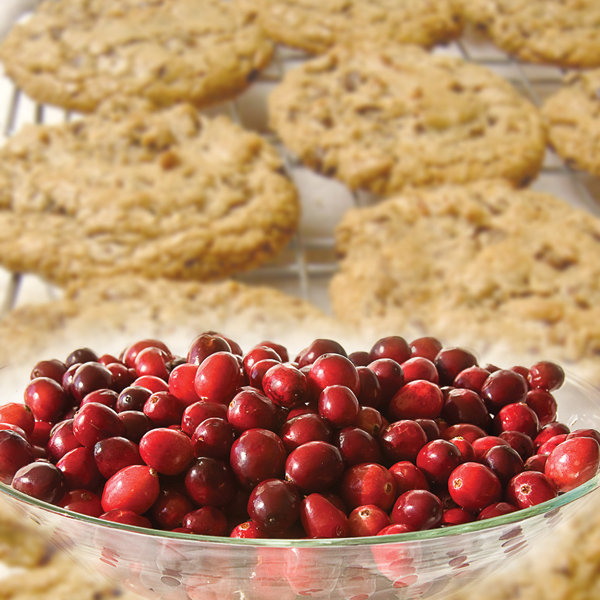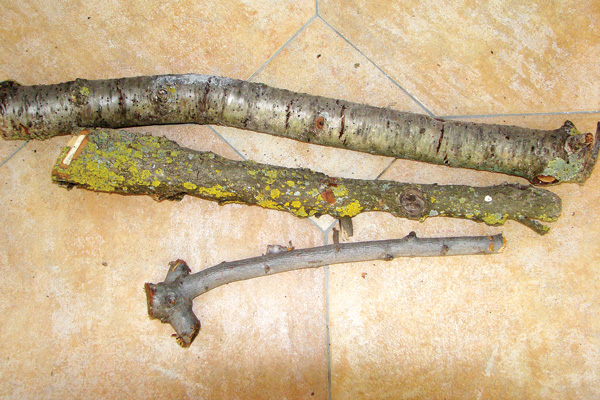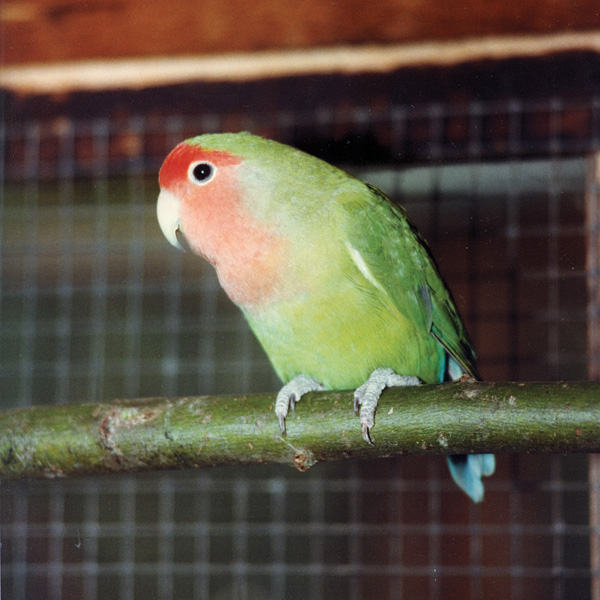 By Pauline James
By Pauline James
Parrots absolutely adore homemade cooked treats, and it is an excellent way to get fussy eaters to try new foods. This recipe for Cranberry Apple Biscuits is delicious, high in nutrients, and most birds won’t be able to resist them, especially if you are tucking into them too!
Cranberry Apple Biscuits
Cranberries are a ‘superfruit,’ and have high nutritional benefits, including high levels of vitamins A, C and K, a diverse supply of minerals, are a good source of phytochemicals, and have powerful antioxidant qualities. They are also anti-bacterial, anti-cancer and benefit the cardiovascular and immune systems. Cranberries are closely related to bilberries, blueberries and huckleberries.
3 large egg whites
¾ cup low sugar apple juice
¼ cup low sugar cranberry juice
3 tablespoons nut/olive oil
2 cups flour (preferably wholegrain)
1½ cups quick cooking oats
1 tsp baking powder
½ cup chopped walnuts
2 cups chopped apples
3 tsp of lemon juice
Preheat oven to 350°F or 175°C
Method:
1. Beat egg whites until almost stiff.
2. Add juices and blend well.
3. Stir in oil.
4. Add flour, oats and baking powder.
5. Mix until well blended.
6. Stir in walnuts and pieces of apple coated in the lemon juice.
7. Drop heaped teaspoonfuls onto a greased baking tray or greaseproof paper.
8. Bake for 10 minutes.
9. When cool, freeze or store in an airtight container in the fridge.
 Using natural perching of differing widths and textures is the best way to keep a parrot’s feet healthy. All manufactured dowelling perches, supplied with larger cages, or the square-shaped grooved plastic perches, intended for lovebirds, parrotlets or budgies, should be discarded.
Using natural perching of differing widths and textures is the best way to keep a parrot’s feet healthy. All manufactured dowelling perches, supplied with larger cages, or the square-shaped grooved plastic perches, intended for lovebirds, parrotlets or budgies, should be discarded.
Select fresh branches of varying sizes that will naturally exercise and stretch a parrot’s feet, helping to keep their toes supple, and prevent cramp or arthritic conditions from developing. Smaller birds with more delicate feet find plastic perches particularly uncomfortable and are more likely to suffer swellings, corns, foot sores, infected ulcers on the soles of the feet, and bumblefoot.
Budgerigars are particularly susceptible to the latter, which is a chronic bacterial infection that penetrates deep into the tissue of the feet. This is mainly due to repeated abrasive injury when their feet are continually set in the same position, and/or dirty conditions. Treatment is surgical drainage and antibiotics.
Cockatiels are more vulnerable to developing ulcerated feet, when using the same-sized, smooth perching continually, and rapid treatment is necessary to stop them becoming crippled and unable to perch. For their comfort, they should be offered a soft layer of newspaper on the floor of their cage, while their feet are healing.
Cut fresh perching or branches for parrots to gnaw and chew on from:
- Any fruit tree, including apple or pear, but not cherry wood, which is thought to be toxic to parrots
- Any nut trees, including hazelnut, walnut, and almond, but not chestnut
- Olive tree wood
- Eucalyptus
- Hawthorn, or
- Any variety of willow
 These trees are non-toxic (except those indicated) to birds and most contain a great diversity of minerals and medicinal properties, which are very healing and beneficial to parrots that enjoy exercising their beaks regularly.
These trees are non-toxic (except those indicated) to birds and most contain a great diversity of minerals and medicinal properties, which are very healing and beneficial to parrots that enjoy exercising their beaks regularly.
 By Pauline James
By Pauline James

 Using natural perching of differing widths and textures is the best way to keep a parrot’s feet healthy. All manufactured dowelling perches, supplied with larger cages, or the square-shaped grooved plastic perches, intended for lovebirds, parrotlets or budgies, should be discarded.
Using natural perching of differing widths and textures is the best way to keep a parrot’s feet healthy. All manufactured dowelling perches, supplied with larger cages, or the square-shaped grooved plastic perches, intended for lovebirds, parrotlets or budgies, should be discarded. These trees are non-toxic (except those indicated) to birds and most contain a great diversity of minerals and medicinal properties, which are very healing and beneficial to parrots that enjoy exercising their beaks regularly.
These trees are non-toxic (except those indicated) to birds and most contain a great diversity of minerals and medicinal properties, which are very healing and beneficial to parrots that enjoy exercising their beaks regularly.